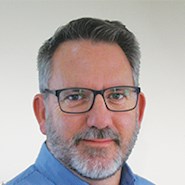By Brian Fortner
The equitable distribution of infrastructure funds, particularly to combat climate change and increase the resiliency of vulnerable communities, has become a major focus at the U.S. Environmental Protection Agency, according to EPA Administrator Michael Regan, who addressed a virtual panel on climate action and environmental justice on Oct. 4 that was part of the 2021 Climate Mayors network’s summit series.
The ongoing series is organized by the bipartisan Climate Mayors, which was established in 2014 and counts as members more than 470 U.S. mayors representing 48 states.
The panel, titled “Climate Action and Environmental Justice,” was developed to “reinforce the importance of investing in infrastructure that achieves emissions reductions, increases resilience of vulnerable communities across the country, and is rooted in equity and sustainability,” said James Ritchotte, executive director of Climate Mayors, during the panel.
“One of the most important things that we can do to advance environmental justice is to ensure that the infrastructure in these communities is resilient to the impacts of climate change, so that our already overburdened communities aren't continuing to bear the brunt and cumulative impacts of climate change,” Regan said in his remarks.
“As mayors, we know that … climate change is a global issue,” said Satya Rhodes-Conway, the mayor of Madison, Wisconsin; moderator of the panel; and co-chair of Climate Mayors. “The root causes of pollution and the effects of extreme heat, cold, and weather disasters are felt at the local level, and as we continue to pursue the goals of the Paris Agreement, we must put equity and environmental justice at the core of our climate action.”
EPA’s equity focus
The EPA has begun to focus more on justice and equity through President Joe Biden’s Justice40 Initiative, an executive order requiring at least 40% of the overall benefits from federal investments in climate change and clean energy be distributed to disadvantaged communities. “For the first time in EPA's 50-year history, our strategic plan includes … advancing environmental justice and civil rights,” Regan said. “And it's critical to have our regional, state, and local partnerships to meet those objectives.”
During the panel, Regan and Robert Bullard, Ph.D., a distinguished professor of urban planning and environmental policy at Texas Southern University, who also is known as the “father” of the environmental justice movement, emphasized the need for local involvement in combating climate change while also supporting equity. “We should be connecting with mayors on the ground with projects that are ready to go to confront climate change, to protect drinking water, and to advance environmental justice,” Regan said.
The work of the group is evident in Houston, according to Mayor Sylvester Turner, who described what environmental justice and social equity looks like in past, present, and future applications.
Houston is wrestling with the cleanup of creosote contamination found in two historically underserved and minority neighborhoods. It also successfully kept a concrete batch plant from being built in a historically Black and historically underserved neighborhood after a lengthy battle and is planning to convert a contaminated landfill site into one of the largest urban solar farms in the U.S. “We need higher standards and better policies to protect vulnerable neighborhoods and prevent companies from building plants that emit high levels of harmful pollutants into their homes and parks,” Turner said.
The effects of climate change on disadvantaged communities are stark. According to an EPA report released in September titled, Climate Change and Social Vulnerability in the United States: A Focus on Six Impacts, Black Americans are 34% more likely to live in communities with the highest projected increases in childhood asthma diagnosis, according to Regan. Also, with a global increase of 2 degrees Celsius, Hispanic and Latino individuals would be 43% more likely to live in communities with the highest projected reduction in labor hours due to extreme temperatures.
The infrastructure package before Congress, as well as the president’s Build Back Better agenda and climate change focus, provides “a significant opportunity not only to mitigate and combat climate change,” Regan said, “but to use these resources and this attitude of looking at life through a justice and equity lens as a rising tide for every single community in this country.”
Resource allocation
Bullard argued that “when we talk about environmental justice in 2021, environmental justice is economic justice. It's energy justice. It's housing, transportation, food, and water justice. We must make sure that we use an equity lens as we talk about infrastructure investments because infrastructure historically has been used to divide communities.”
The technology exists to pinpoint where the greatest needs are, Bullard added. However, federal disaster-relief money — necessary because of the impacts of climate change —generally is allocated based on cost-benefit analyses from the Federal Emergency Management Agency. Bullard recommends that project money allocation during disasters also incorporate the Centers for Disease Control and Prevention’s Social Vulnerability Index, which identifies demographic groups and geographic locations with higher vulnerability to environmental and public health stresses, to better distribute money to those in need.
“If you just use cost-benefit analysis,” Bullard said, “the money will follow money, and the money will follow power.” Instead, the panel recommends looking beyond that. “We are talking about innovative, creative, transformative change that can eradicate this inequality that somehow has been so hard to address,” he said.
The panel members agreed that the EPA and other federal government agencies have done well to put greater emphasis on environmental justice and Rhodes-Conway summed up the session with, “We must continue to use an equity lens in our infrastructure investments, wherever the money is coming from, making sure that we are not reproducing inequality.”



